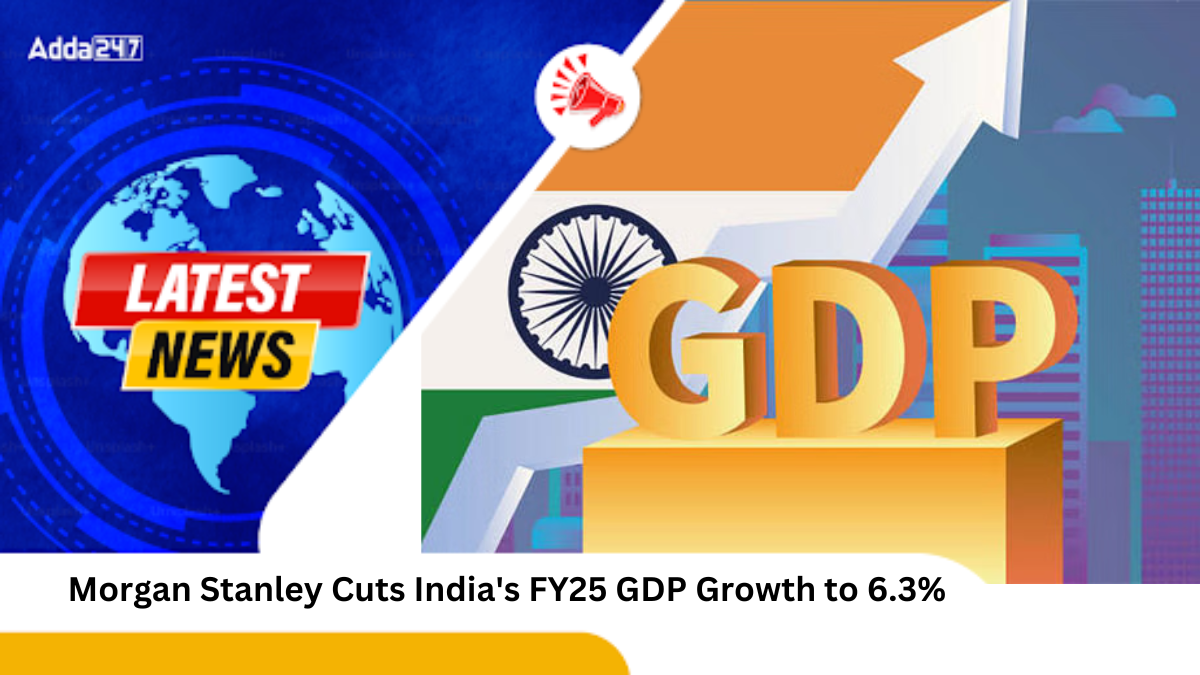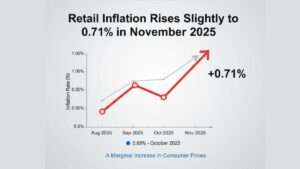Morgan Stanley has revised India’s GDP growth projection for FY25 down to 6.3%, from its previous estimate of 6.7%. This downward revision comes after India’s GDP growth slowed to 5.4% in the July-September 2024 quarter, marking its lowest level since March 2023. This reflects a broader economic slowdown, driven by weaker private consumption and capital expenditure (capex), though the services sector showed resilience. Despite this dip, Morgan Stanley maintains optimism for a recovery in the latter half of FY25, expecting growth to average 6.6%, fueled by government spending, improved rural demand, and easing financial conditions.
Key Points from the Latest Revision
Slowdown in Q2 FY25: India’s GDP growth fell to 5.4% YoY in Q2, down from 6.7% in the previous quarter, primarily due to weaker private consumption and a subdued industrial sector.
Sector Performance: Private consumption grew by 6% while capex growth was lower at 5.4%. The services sector expanded by 7.1%, but industry lagged with a 3.9% increase, largely due to declines in manufacturing and electricity generation.
Expectations for FY25’s Second Half
Recovery Outlook: Morgan Stanley forecasts a recovery in the latter half of FY25, with GDP growth expected to average 6.6%, driven by strong seasonal demand from the festive and wedding seasons.
Drivers of Growth: Increased government spending, rural demand recovery, and improved financial conditions are expected to drive the economic rebound.
Monetary Policy and Liquidity Concerns
RBI’s Role: Morgan Stanley predicts that the Reserve Bank of India (RBI) will maintain interest rates at current levels during its upcoming policy review on December 6, with inflation easing to 5-5.5% in the next two months.
Liquidity Measures: With tight liquidity in the banking system, the RBI may implement liquidity-enhancing measures, including open market operations (OMO).
Key Factors for Sustained Economic Growth
Government Spending: Monitoring trends in revenue and capital expenditure, as well as cash balances with the RBI, will be critical.
Agricultural Performance: Strong kharif production and rabi sowing will affect food prices and rural demand.
Domestic Liquidity: A stable financial environment will be crucial for maintaining economic activity levels.
Summary of the news
| Why in News | Key Points |
|---|---|
| Morgan Stanley revises India’s GDP growth forecast for FY25 to 6.3% | – Revised GDP growth forecast from 6.7% to 6.3% for FY25. – India’s GDP growth slowed to 5.4% in Q2 FY25, lowest since March 2023. – Private consumption grew by 6%, capex grew by 5.4%. – Services sector grew by 7.1%, industry sector grew by 3.9%. – Expected recovery in H2 FY25 with 6.6% growth. – Driven by government spending, rural demand, and easing financial conditions. |
| Q2 FY25 GDP performance | – GDP growth in Q2 FY25: 5.4% YoY. – Below Morgan Stanley’s forecast of 6.3% and consensus estimate of 6.5%. |
| Monetary Policy Update | – RBI expected to keep interest rates unchanged on December 6 review. – Inflation forecast to ease to 5-5.5% in next 2 months. – Tight liquidity could lead RBI to implement open market operations (OMO). |
| Economic Drivers | – Key drivers for recovery: government spending, rural demand, and financial conditions. – Factors to monitor: Government expenditure trends, agricultural performance, domestic liquidity. |
| Sector Performance | – Services sector grew by 7.1%. – Industry sector (including manufacturing and electricity) grew by 3.9%. |
| Future Growth Forecast | – Morgan Stanley projects a rebound with 6.6% GDP growth in H2 FY25. – Anticipated recovery due to positive trends in October-November, strong festive/wedding season. |
| Inflation and RBI measures | – Inflation remains above 6%, expected to ease. – RBI may adopt liquidity-enhancing measures (OMO) to manage tight banking system liquidity. |



 India’s Forex Reserves Rise by $1.68 Bil...
India’s Forex Reserves Rise by $1.68 Bil...
 India’s Net Direct Tax Collections Rise ...
India’s Net Direct Tax Collections Rise ...
 Retail Inflation Rises Slightly to 0.71%...
Retail Inflation Rises Slightly to 0.71%...







